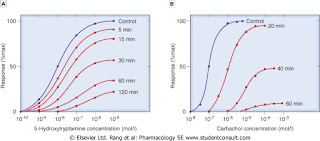Drug Discovery PROCESS
Drug discovery involves series of steps that are needed for launching a new drug in the market. Generally following basic steps are involved in discovery of new chemical moiety and launching it as drug in the market.
STEP 1: DRUG Discovery
Typically, researchers discover new drugs through:
- New insights into a disease process that allow researchers to design a product to stop or reverse the effects of the disease
- Many tests of molecular compounds to find possible beneficial effects against any of a large number of diseases
- Existing treatments that have unanticipated effects
- New technologies, such as those that provide new ways to target medical products to specific sites within the body or to manipulate genetic material
At this stage in the process, thousands of compounds may be potential candidates for development as a medical treatment. After early testing, however, only a small number of compounds look promising and call for further study.
Step 2: Preclinical Research
- In Vitro
- In Vivo
FDA requires researchers to use good laboratory practices (GLP), defined in medical product development regulations, for preclinical laboratory studies. The GLP regulations are found in 21 CFR Part 58.1: Good Laboratory Practice for Nonclinical Laboratory Studies.
Step 3: Clinical Research:
- Designing Clinical Trials
- Clinical Research Phase Studies
- The Investigational New Drug Process
- Asking for FDA Assistance
- FDA IND Review Team
- Approval
Designing of Clinical Trials:
Researchers design clinical trials to answer specific research questions related to a medical product. These trials follow a specific study plan, called a protocol, that is developed by the researcher or manufacturer. Before a clinical trial begins, researchers review prior information about the drug to develop research questions and objectives. Then, they decide:
- Who qualifies to participate (selection criteria)
- How many people will be part of the study
- How long the study will last
- Whether there will be a control group and other ways to limit research bias
- How the drug will be given to patients and at what dosage
- What assessments will be conducted, when, and what data will be collected
- How the data will be reviewed and analyzed.
Step 4: FDA Review:
If a drug developer has evidence from its early tests and preclinical and clinical research that a drug is safe and effective for its intended use, the company can file an application to market the drug. The FDA review team thoroughly examines all submitted data on the drug and makes a decision to approve or not to approve it.
New Drug Application:
A New Drug Application (NDA) tells the full story of a drug. Its purpose is to demonstrate that a drug is safe and effective for its intended use in the population studied.
A drug developer must include everything about a drug—from preclinical data to Phase 3 trial data—in an NDA. Developers must include reports on all studies, data, and analyses. Along with clinical results, developers must include:
- Safety updates
- Drug abuse information
- Patent information
- Any data from studies that may have been conducted outside the United States
- Institutional review board compliance information
- Directions for use
FDA Review:
Once FDA receives an NDA, the review team decides if it is complete. If it is not complete, the review team can refuse to file the NDA. If it is complete, the review team has 6 to 10 months to make a decision on whether to approve the drug.
FDA Approval:
In cases where FDA determines that a drug has been shown to be safe and effective for its intended use, it is then necessary to work with the applicant to develop and refine prescribing information. This is referred to as “labeling.” Labeling accurately and objectively describes the basis for approval and how best to use the drug.





This was a useful post and I think it's fairly easy to see in the other reviews, so this post is well written and useful. Keep up the good work.
ReplyDeleteThird Party Manufacturing Pharma Companies
Pharma Manufacturing Companies
I saw you have unique knowledge of pharmacy . Thanks for sharing such kind of information with us. Top 10 Pharma company in lucknow
ReplyDeleteThis post is well written and helpful because it was informative. Continue your good job. You have specific pharmacy expertise. It is greatly appreciated that you provided us with information like this. The blog is well explained and very informative. This is such a comprehensive post, and the blog is nicely written and has lots of information in it....For more information Sollers College
ReplyDeleteThank you for sharing such useful information. Formulation development services
ReplyDeleteThe PCD pharma franchise model is an excellent opportunity for individuals looking to enter the pharmaceutical sector. Top 10 PCD Pharma Franchise Company in India in this space are known for their quality products, ethical practices, and strong support systems, making them reliable partners for franchisees. By choosing the right company and leveraging the growing demand for healthcare products, franchisees can achieve significant growth and success in the industry. Starting a Top 10 PCD Pharma Franchise Company in India business in India is a promising opportunity for aspiring entrepreneurs.
ReplyDelete